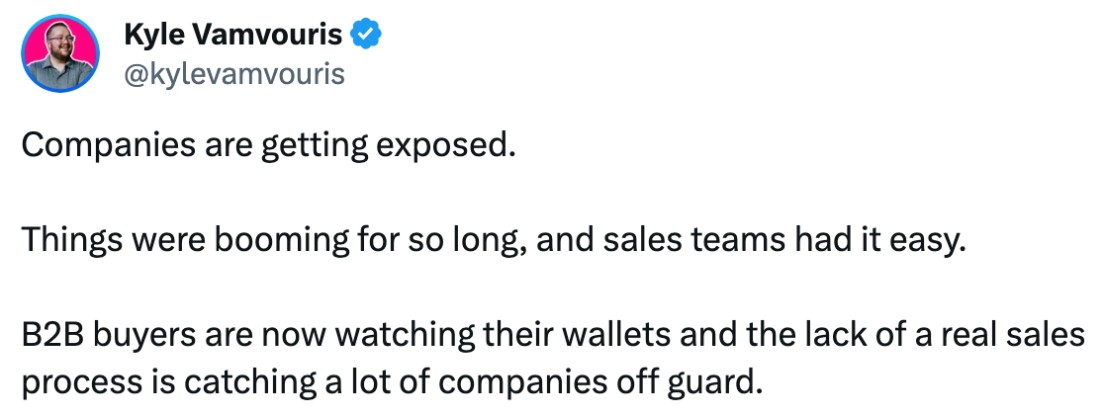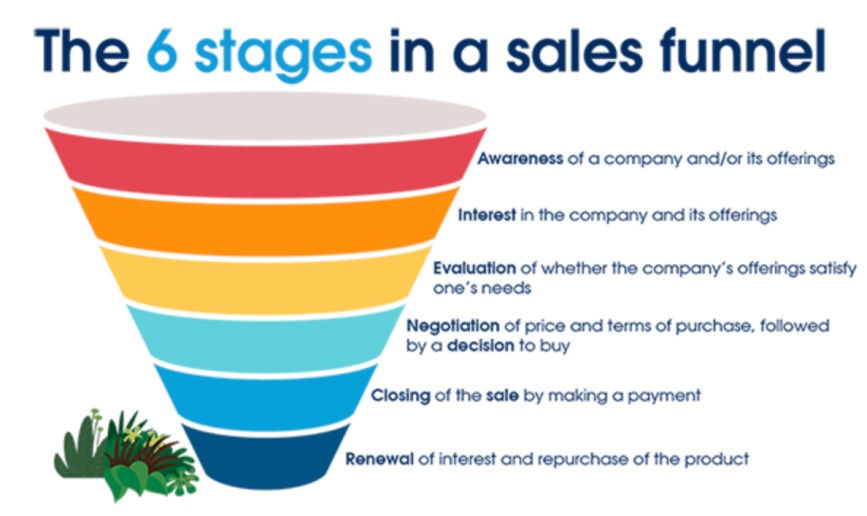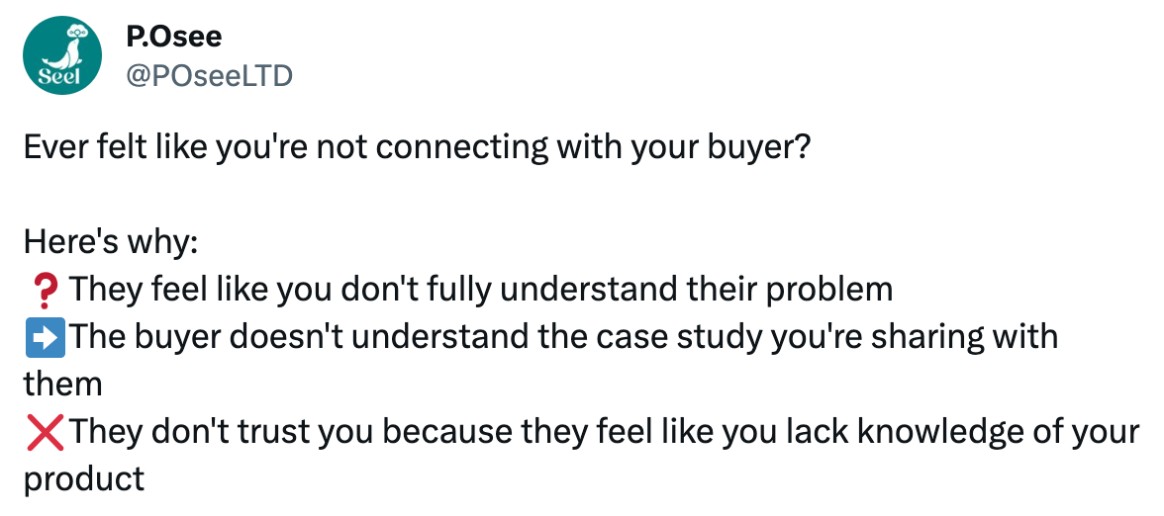B2B sales can be tricky. Teams often struggle with long sales cycles, endless efforts in building relationships, pre and post-sales activities, and repeated improvements in the sales process.
You need a streamlined B2B sales process to ensure your team sails smoothly through their responsibilities, hits targets consistently, and boosts the bottom line.
This guide will help you identify critical reasons why you need a B2B sales process and share proven tips to build the foundation for your sales success. We’ve also curated a comprehensive list of tools to maximize your sales efforts.
What is the B2B Sales Process?
A B2B sales process is a set of repeatable and scalable steps used by sales reps and teams to find, nurture, and convert prospects into customers. A typical B2B sales process includes multiple stages like prospecting, needs assessment, discovery, pitching, follow-up, negotiation, and closing.
These steps depend on your industry, the product or service you’re selling, your audience, and overall business goals.
Why Do You Need a Well-defined B2B Sales Process?
Imagine you’re going to cross the Amazon rainforest with your teammates without a map. You don’t know where to go, how to operate your boat, or how many days it’ll take for you to reach the other end of the forest. This is exactly how teams feel without a well-defined sales framework.
You and your sales team need a well-defined sales process to:
- Reduce the anxiety about the next step in your sales actions. A sales process will define your next move and ensure you’re heading in the desired direction.
- Increase the efficiency and effectiveness of sales performance. This will ensure high sales productivity.
- Define your key performance index for sales actions and outcomes. It’ll help you track your progress in measurable terms and make improvements in your system and actions.
B2B sales cycles are typically longer than B2C sales cycles. They involve many stakeholders and decision-makers; prospects are more problem and solution-aware; and sales and ticket sizes are bigger. Having a defined process will guide your sales journey and set achievable goals.
Need help mastering your B2B sales process and lead the market?
Contact Growth Hackers
Master the B2B Sales Process in 3 Steps (+ best practices and key things you can’t miss)
To make it easy for you to strategize your sales process, break it down into three stages: pre-sales preparation, sales action, and post-sales action. Let’s discuss each in more detail.
1. Pre-sales preparation
You don’t want to be a blank slate on the first prospect interaction or search for important documents on a sales call. Not only does this create a stressful scenario for you, but it also sends a message to your prospects that you aren’t prepared to onboard them.
Here’s a list of pre-sales tasks for a stress-free sales workflow:
1.1. Create an achievable sales goal
Start by identifying the growth areas and communicating them to other stakeholders. Come down to the ones with high priority. An achievable goal is like having a destination on your map. You know where you want to go.
Create sales goals that are SMART—specific, measurable, achievable, realistic, and time-based. For every goal you choose, evaluate it on these five parameters to shortlist the one that is best for you.
1.2. Determine your ICP and devise a sales funnel
A clear idea of your ICP will not just help you uncover their pain points, goals, and motivations. It’ll also filter out people irrelevant to the product or service you’re selling.
A sales funnel is the path your reps will show to your prospects to convert them into customers.
B2B sales funnels are often non-linear because clients hardly move from one stage to another in the funnel. These funnels also have more steps than B2C sales funnels, are longer with high buying time, have more decision-makers, and have higher complexity.
1.3 Keep your documentation and sales tools in place
Having your documentation in place ensures that you don’t frantically search for the relevant documents while your prospect starts fading away.
Sales tools are often missed in discussions on the B2B sales process. Having a robust set of tools will help you scale sales success while minimizing efforts and resources.
2. Sales action
This is the stage to find leads with outbound email marketing or other techniques. Establish the first contact, and work towards developing a long-term relationship and gaining their trust. It’s like putting all the ingredients you’ve gathered into a pot according to the recipe to cook a hearty and delicious soup.
Here are the steps you need to take to nail your sales action:
2.1 Prospecting and lead generation
Prospecting is identifying your target markets and decision-makers. It’s critical to direct your efforts in the right direction.
For B2B sales, find platforms where your prospects hang out. You can generate leads using platforms like LinkedIn and X (formerly Twitter), cold emailing decision makers, warm calling prospects, running ads, attending virtual or in-person events, holding webinars, and publishing case studies, white papers, and ebooks. Follow this up with exporting these leads into a CRM tool.
Sounds like a lot of work, right? One popular way of streamlining lead gen is hiring an appointment setter to handle the repetitive tasks. With the added support, you and your team can speed up your sales cycle, and ultimately, increase conversions.
2.2 Research your clients and prepare for the sales call
If you’re meeting your prospect for the first time, do enough research beforehand. It’ll also help minimize friction for your prospects and help you connect better with them.
- Prepare questions to know their pain points and motivations
- Create product demonstration or service samples
- Keep your files documented, arranged, and ready to access
2.3 The sales call
With all these preparations in place, you and your reps are ready to ace the sales/closing call. Apply your best practices and make your prospects feel understood.
You can record your conversations if both parties are comfortable, to help reevaluate and make desired changes in further calls.
2.4 The post-call message
Immediately after the call, send an email to your prospect recollecting important points of the call, your offer, and social proof of your product or service.
This will help you in three ways—position you as sincere and trustworthy, get you in the loop with them, and make them remember your offering.
3. Post-sales actions
Post-sales action is the last mile before you reach the finish line. It’ll ensure that you develop and maintain contact with your prospects, send them your product or service details if they need them again, and handle any ifs and buts.
Here’s how you set up your post-sales process to maximize your sales outcomes:
3.1 Follow-up
Following up is one of the most underrated sales tasks. You can restructure your offer using scarcity, urgency, and bonuses, and provide reassurance using guarantees and testimonials.
This also helps your prospects remember your offering over and over again. Create a schedule for follow-ups and stay in the loop with them.
3.2 Check in with your prospects
Oftentimes in B2B interaction, decision-makers change, responsibilities shift, and company needs evolve. With these changes, new objections may also arise. To stay ahead of these challenges, keep in touch with your prospects. Solve their objections, address new decision-makers, and get on more calls if required.
You can do this by inviting them to your webinars, sharing your in-house report and case study, informing them about product or service upgrades, and attending their events.
3.3 Stay connected and build trust
The key reason behind a post-sales action is to stay connected to your prospects to carry them along the sales pipeline and gain trust in the process.
Your consistent visibility will build trust and make you one of the considerations on their shortlist which improves your conversion rate.
Get ready to maximize your efforts and hit targets with a foolproof sales process!
3 Best Practices for Winning B2B Sales Process
Here are our top three best practices for building an airtight B2B sales process:
1. Focus on building trust and staying in the loop with your clients
One essential function of B2B sales is establishing a relationship with your clients. B2B prospects take a relatively longer time to convert and tend to make multiple purchases if they’re satisfied with your offering.
That’s why you should focus on fostering relationships with your prospects and customers. Stay in touch with them, ask about their experiences, and understand their changing needs. When done right, you can increase the lifetime value of each customer and up-sell or cross-sell your offering.
2. Take feedback and address objections
B2B sales are often met with objections, and they’re rarely met with all nods on the first call. You and your team will have to learn and master objection handling for this.
Each prospect has some unique issues. They find it difficult to visualize how your product or service will fit their needs. Acknowledge their objections with empathy and tackle each of them one by one.
3. Use automation where necessary
With the right tools, you can automate parts of your B2B sales process. It’ll help your sales reps focus on one thing that matters most—selling.
Actions like prospecting and lead generation, data handling, reporting, and tracking can be automated to increase sales productivity.
7 Tools to Build a Strong B2B Sales Tech Stack
The right sales tech stack will boost sales efficiency, make teams more effective, and streamline sales processes for you. Choosing the right tools may take some time, but with the tool categories in mind, you can reduce the friction.
State of Sales Report shows that 94% of sales organizations plan to consolidate their tech stack in the next 12 months
Here is a list of B2B sales tools for your sales success:
- CRM: Customer relation management or CRM tool will centralize and manage your client-related information. You’ll be able to keep prospect contact and account details, mark the stage of the sales pipeline they’re in, record issues and objections, and note the last interaction details.
- Sales intelligence tool: This tool will help you track, collect, and analyze prospect-related data. It’ll give you insights into prospect behaviors, motivations, and preferences and aid in the sales decisions you make.
- Lead generation tool: If you’re looking to scale and streamline your lead generation game while targeting the exact prospect category that fits your ICP, then this sales tool is for you.
- Sales forecasting tool: This tool will provide you with insights to help you set realistic sales goals, estimate the market demand for your product or service, forecast cost and revenue, and predict sales performance.
- Automation and analytics tool: If you’re trying to rev up your sales success, this tool is for you. You can automate parts of the sales process to attract, generate, and nurture leads, collect and analyze data, identify weak spots, and offer help to your users.
- Communications software: This tool will smoothen your virtual, verbal, video, and in-person communications with your prospects and allow for collaboration between your team members.
- Knowledge base for reps and customers: You need a tool to create and manage knowledge base that will help your reps stay one step ahead of your prospects by centralizing documentation. You can also create a knowledge base to help prospects explore your product in more detail.
Create a B2B Sales Process for Success
It might look like a lot to do, but breaking down your tasks into different stages will help you sail smoothly toward your ideal B2B sales process.
Alternatively, you can choose Growth Hackers as your B2B marketing partner to set up the entire system for you so that you leave the frustration behind, focus on things that matter most to you, and seek professional help from those who’ve done it before successfully.
There is no fluff with Growth Hackers. We help entrepreneurs and business owners master the B2B sales process, increase their productivity, generate qualified leads, optimize their conversion rate, gather and analyze data analytics, acquire and retain users and increase sales. We go further than brand awareness and exposure. We make sure that the strategies we implement move the needle so your business grow, strive and succeed. If you too want your business to reach new heights, contact Growth Hackers today so we can discuss about your brand and create a custom growth plan for you. You’re just one click away to skyrocket your business.











